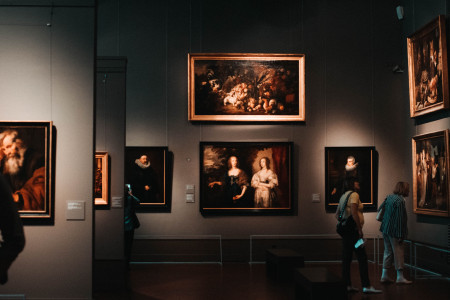How Galleries Are Investing In Art Now

NEW YORK, May 22, 2023 (Newswire.com) - Today's art galleries are under assault from online sales and the steadily rising costs of real estate in the major cities in which the finest galleries are located. As a result, taking on a new artist represents a significant investment for a gallery owner. After all, in addition to providing exhibition space, galleries are tasked with marketing artists' work, selling their work, and participating in the development of the artists they represent. As researchers at Yieldstreet have come to understand, when it comes to how galleries are investing in art now, the key factors are relationships, reputation, and relevance.
Relationships
Gallery owners seldom work with unknown artists who wander in off the street or contact them via social media. Instead, gallery owners tend to depend on their personal connections to find artists whose work fits their galleries. They usually seek recommendations from dealers and/or curators with whom they are familiar and whose opinions they trust.
Reputations
Gallery owners invest in artists just as much as their works.
Before agreeing to provide representation, a gallery owner's due diligence encompasses an artist's resume, reputation, and accomplishments. They consider the types of awards that artist has won, along with their standing in the art community. Social media following and online profiles are considered as well. Owners will talk to knowledgeable people in the art community to get a sense of what to expect when working with an artist. They also research an artist's sales history and reviews of their past shows.
Long story short, artists who garner representation have convinced gallery owners they are solidly committed to producing art. They have worked to develop favorable relationships with curators and critics. They have established track records of doing what's expected of them—without causing headaches.
In other words, these artists have done what it takes to cultivate a positive reputation.
Relevance
An artist and their work must align with what a gallery is all about. Buyers tend to look to specific galleries for specific types of art. This means a gallery must weave a consistent narrative in order to be successful. To accomplish this, owners look for artists who fit within their specific missions and aesthetics. They also look for work they believe in, which makes it an easier sell. Most galleries also require a degree of exclusivity. After all, if they're going to invest time, effort and resources in an artist, they want to be in a position to benefit whenever that artist's work generates revenue.
Basically, when it comes to how gallery owners are investing in art now, their investment strategy is largely the same as investing in any other type of asset. They develop relationships with people they feel they can trust. They consider the reputation of the "asset" as being worthy of investment. Finally, they look for opportunities that fit in with their overall goals.
Source: Yieldstreet